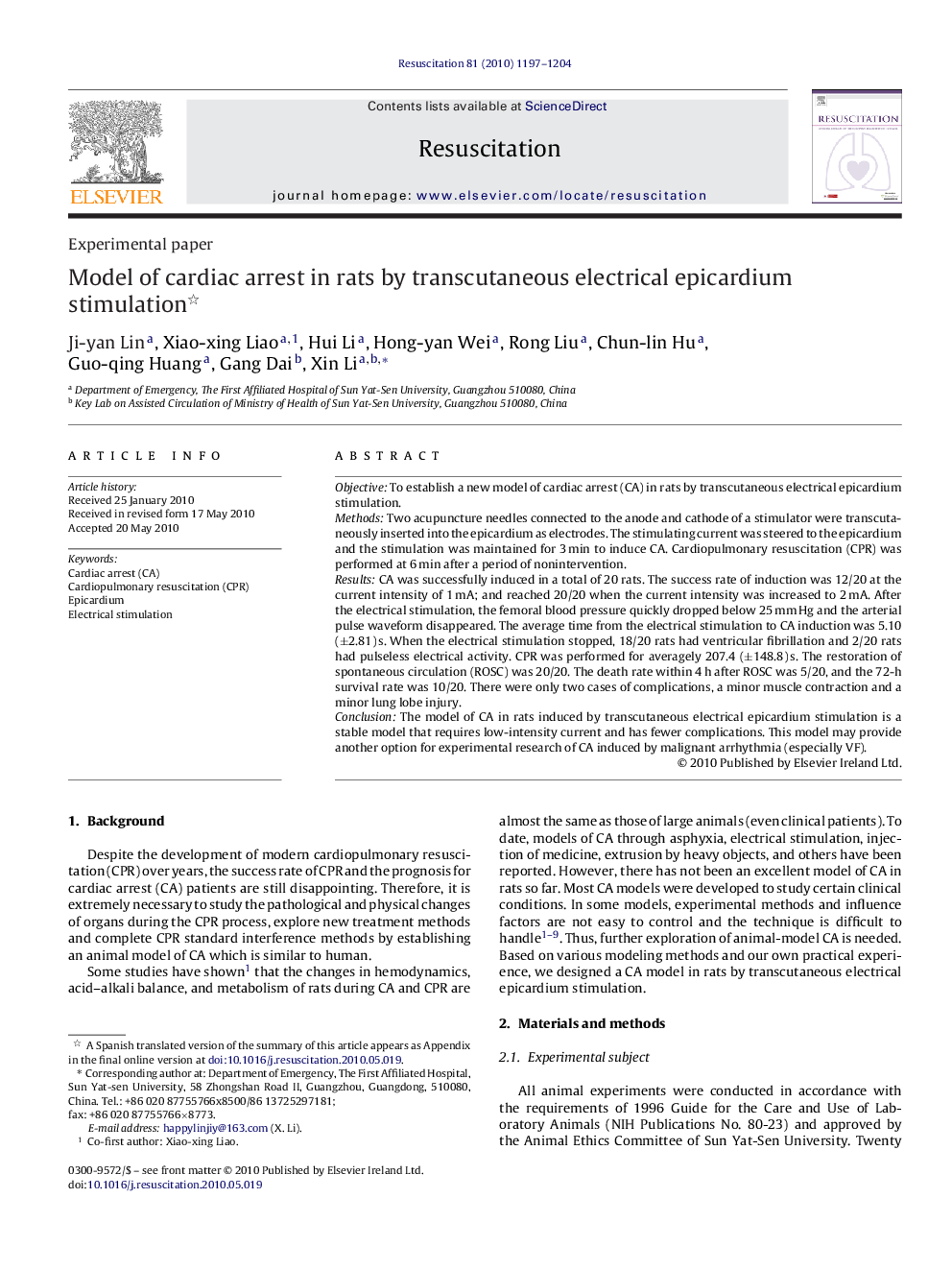| Article ID | Journal | Published Year | Pages | File Type |
|---|---|---|---|---|
| 3009319 | Resuscitation | 2010 | 8 Pages |
ObjectiveTo establish a new model of cardiac arrest (CA) in rats by transcutaneous electrical epicardium stimulation.MethodsTwo acupuncture needles connected to the anode and cathode of a stimulator were transcutaneously inserted into the epicardium as electrodes. The stimulating current was steered to the epicardium and the stimulation was maintained for 3 min to induce CA. Cardiopulmonary resuscitation (CPR) was performed at 6 min after a period of nonintervention.ResultsCA was successfully induced in a total of 20 rats. The success rate of induction was 12/20 at the current intensity of 1 mA; and reached 20/20 when the current intensity was increased to 2 mA. After the electrical stimulation, the femoral blood pressure quickly dropped below 25 mm Hg and the arterial pulse waveform disappeared. The average time from the electrical stimulation to CA induction was 5.10 (±2.81) s. When the electrical stimulation stopped, 18/20 rats had ventricular fibrillation and 2/20 rats had pulseless electrical activity. CPR was performed for averagely 207.4 (±148.8) s. The restoration of spontaneous circulation (ROSC) was 20/20. The death rate within 4 h after ROSC was 5/20, and the 72-h survival rate was 10/20. There were only two cases of complications, a minor muscle contraction and a minor lung lobe injury.ConclusionThe model of CA in rats induced by transcutaneous electrical epicardium stimulation is a stable model that requires low-intensity current and has fewer complications. This model may provide another option for experimental research of CA induced by malignant arrhythmia (especially VF).
